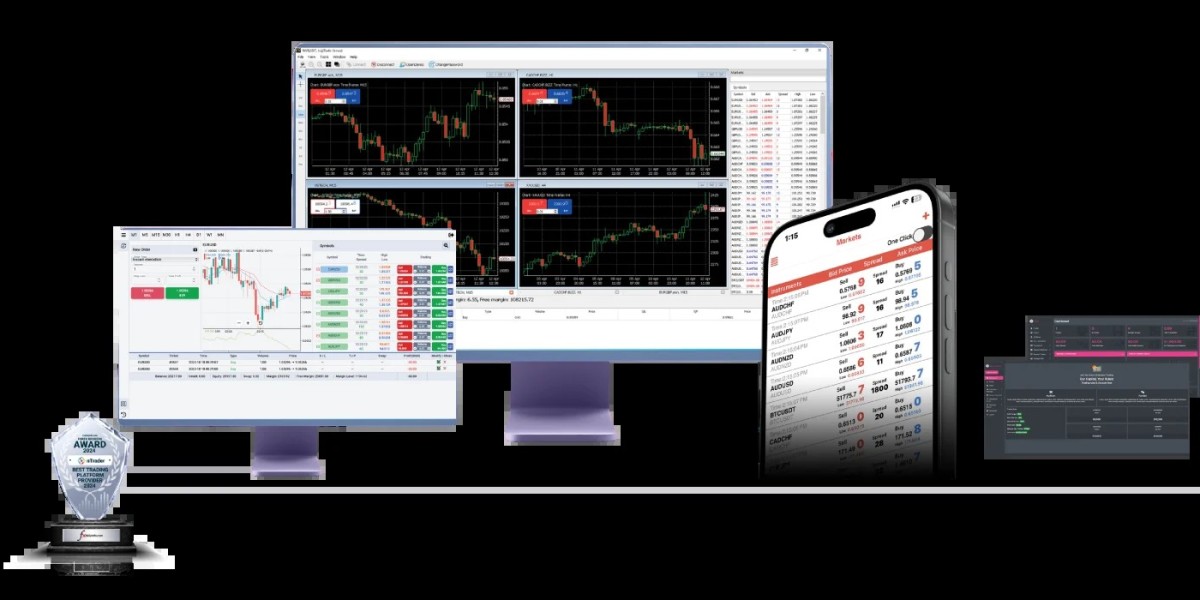Environmental monitoring has become a key priority as organizations seek sustainable solutions. Tracking environmental parameters such as emissions, waste management, water usage, and energy consumption requires advanced systems. Environment Management Dashboard Development Services offer customized dashboards that help organizations monitor their environmental performance and comply with regulatory requirements.
This article provides an in-depth understanding of Environment Management Dashboard Development from a technical perspective, covering essential features, technologies, challenges, and benefits.
What Is an Environment Management Dashboard?
An environment management dashboard is a centralized digital platform that collects and displays data related to environmental parameters. It helps organizations track their carbon footprint, energy consumption, water usage, and waste management efforts. These dashboards ensure compliance with environmental standards and provide actionable insights for improving sustainability.
Key Features of Environment Management Dashboard Development
The effectiveness of environment management dashboards depends on how well they capture, analyze, and present environmental data. Below are the key features:
1. Real-Time Data Monitoring
Dashboards provide live data on emissions, energy consumption, and waste levels.
Real-time data ensures quick identification of environmental risks and deviations from targets.
2. Customizable KPIs
Key Performance Indicators (KPIs) are tailored to meet the organization’s sustainability goals.
KPIs may include:
Carbon Emissions (in tons/year)
Energy Usage per Employee
Water Usage Efficiency
Waste Recycling Rate
3. Regulatory Compliance Tracking
Dashboards track compliance with local, national, and international environmental regulations.
Alerts notify organizations of deviations from emission or waste disposal limits.
4. Predictive Analytics
Predictive models forecast environmental risks, helping businesses mitigate issues before they escalate.
Forecasting also assists in planning resource usage, reducing waste, and optimizing energy consumption.
5. Integration with IoT Sensors
IoT sensors collect data on environmental parameters, such as air quality or water flow, in real time.
Data from IoT devices is visualized on the dashboard, improving operational visibility.
6. Role-Based Access and Permissions
Different roles have access to specific data and reports based on responsibilities.
Administrators, sustainability officers, and operations managers can view metrics relevant to their needs.
Technologies Used in Environment Management Dashboard Development
Developing effective dashboards requires a combination of technologies for data collection, processing, and visualization.
1. IoT Sensors and Devices
Sensors monitor temperature, humidity, carbon emissions, and energy consumption.
Devices transmit data to the dashboard for visualization and analysis.
2. Data Visualization Tools
Tools like Power BI, Tableau, and Grafana help create interactive dashboards.
Visual elements include graphs, heatmaps, and trend lines for easy data interpretation.
3. Cloud Infrastructure
Cloud platforms such as Microsoft Azure and AWS provide scalable storage for environmental data.
Cloud solutions support remote access, allowing teams to monitor environmental performance from any location.
4. API Integration
APIs connect various systems, such as Building Management Systems (BMS) and energy meters, with the dashboard.
RESTful APIs facilitate seamless data exchange between platforms.
5. Artificial Intelligence (AI)
AI models analyze historical data to predict future environmental trends.
Machine learning algorithms identify patterns and anomalies in energy and waste data.
The Role of Environment Management Dashboard Development Services
Environment Management Dashboard Development Services offer specialized solutions that align with an organization’s sustainability goals. These services cover all aspects of dashboard creation, from planning and design to implementation and maintenance.
1. Customization Based on Industry Needs
Manufacturing firms require dashboards focused on emissions, waste management, and energy use.
Real estate companies may track energy efficiency and water conservation in smart buildings.
2. Integration with Existing Systems
Services include seamless integration with current systems, such as ERP software and IoT devices.
This ensures the dashboard consolidates data from multiple sources for a complete view.
3. Ongoing Maintenance and Support
Environment management dashboard services provide regular updates and technical support.
Maintenance ensures that dashboards stay compatible with evolving technologies and regulatory standards.
Challenges in Developing Environment Management Dashboards
Despite the benefits, several challenges arise during the development of environment management dashboards:
1. Data Quality and Consistency
Inaccurate or incomplete data can reduce the reliability of insights.
Automated data validation processes are required to maintain data quality.
2. System Integration Issues
Integrating multiple data sources, such as sensors and ERP systems, can be complex.
Developers need to build custom APIs or middleware to ensure smooth communication between systems.
3. Security and Privacy Risks
Environmental data may include sensitive information that requires protection.
Implementing encryption and access controls helps prevent unauthorized access.
Benefits of Environment Management Dashboard Development
The benefits of developing environment management dashboards go beyond compliance. They contribute to long-term sustainability and operational efficiency.
1. Improved Resource Management
Real-time tracking helps reduce energy waste and water usage.
Efficient resource use lowers operational costs and minimizes environmental impact.
2. Regulatory Compliance and Risk Mitigation
Dashboards ensure that organizations meet environmental regulations.
Predictive analytics identify risks early, allowing companies to take corrective actions.
3. Enhanced Decision-Making
Visual reports provide clear insights, helping management make data-driven decisions.
Dashboards offer historical data trends that guide sustainability planning.
4. Transparency and Accountability
Dashboards enable transparent reporting on environmental performance to stakeholders.
Publicly sharing data builds trust and demonstrates a commitment to sustainability.
Case Study: Google’s Environmental Dashboard
Google, a leader in environmental sustainability, uses advanced dashboards to monitor its carbon footprint and energy usage.
Key Metrics Monitored: Carbon emissions, energy consumption, and water usage across data centers.
Impact: The dashboards helped Google achieve 100% renewable energy usage for its global operations in 2017.
This case illustrates how Environment Management Dashboard Development can drive sustainable operations at a large scale.
Future Trends in Environment Management Dashboard Development
Several trends are shaping the future of environment management dashboards:
1. AI-Powered Insights
AI will play a larger role in predicting environmental trends and optimizing resource use.
Dashboards will use machine learning to recommend actions for improving sustainability.
2. Blockchain for Environmental Reporting
Blockchain technology ensures transparent and tamper-proof environmental reports.
Dashboards will integrate blockchain to track the origin of green energy and carbon offsets.
3. 5G for IoT Connectivity
5G networks will enhance the connectivity of IoT sensors used in environmental monitoring.
Faster data transmission will improve real-time monitoring and decision-making.
Conclusion
Environment Management Dashboard Development Services provide organizations with the tools they need to monitor environmental performance effectively. By integrating data from IoT devices, ERP systems, and cloud platforms, these dashboards offer real-time insights and help organizations meet sustainability goals.
With growing regulatory demands and the push for sustainable practices, Environment Management Dashboard Development will become even more critical. Organizations that invest in these dashboards will gain a competitive advantage by improving resource management, reducing risks, and demonstrating environmental responsibility.













